Optical Coherence Tomography (OCT)
Retinal architecture is scanned using the Lecia® SD-OCT. This allows for accurate lesion volume and segmentation measurements of the retina.
Fluorescein Angiography (FA)
High-definition image capture of FA after laser induction allows us to measure leakage area and intensity.
Histology Services
We provide immunohistochemistry (IHC)/immunofluorescence(IF) of your ocular samples for additional grading and/or target staining.
Electroretinography (ERG)
Should your study require retinal functional readouts, ERG is also offered in this study model.
Microinfusion Injection Delivery
Intraocular injection modalities include subretinal, intravitreal, intracameral, and suprachoroidal infusions.
Types of CNV Models
Studying the pathogenesis and treatment options for choroidal neovascularization requires diverse models to replicate its conditions. These CNV models are used to investigate controlled angiogenic processes, cellular and molecular events, and test the efficacy of anti-angiogenic therapies.
This choroidal neovascularization model imitates changes associated with the condition by injecting a gelatinous protein mixture into the subretinal space. It provides a method for studying controlled angiogenic processes, examining cellular and molecular events in angiogenesis, and testing anti-angiogenic therapies.
CNV pathogenesis is heavily influenced by inflammation, and inflammatory CNV model induces inflammation in the retina or choroid to provoke an immune response, leading to the growth of abnormal blood vessels. By assessing the impact of inflammation and testing anti-inflammatory treatments, researchers can understand CNV development and potential therapies.
Transgenic Mouse CNV Models enable the modification of mouse genes to recreate the genetic mutations linked to choroidal neovascularization in humans. Providing a better understanding of the genetic basis of CNV and help in the development of targeted therapies.
Choroidal neovascularization processes can be stimulated using in vitro cell culture CNV models, in order to study cellular behaviors and potential treatments. Allowing for precise experimentation and drug testing, enabling early-stage drug discovery for choroidal neovascularization.
Laser Induced Choroidal Neovascularization in Rodents
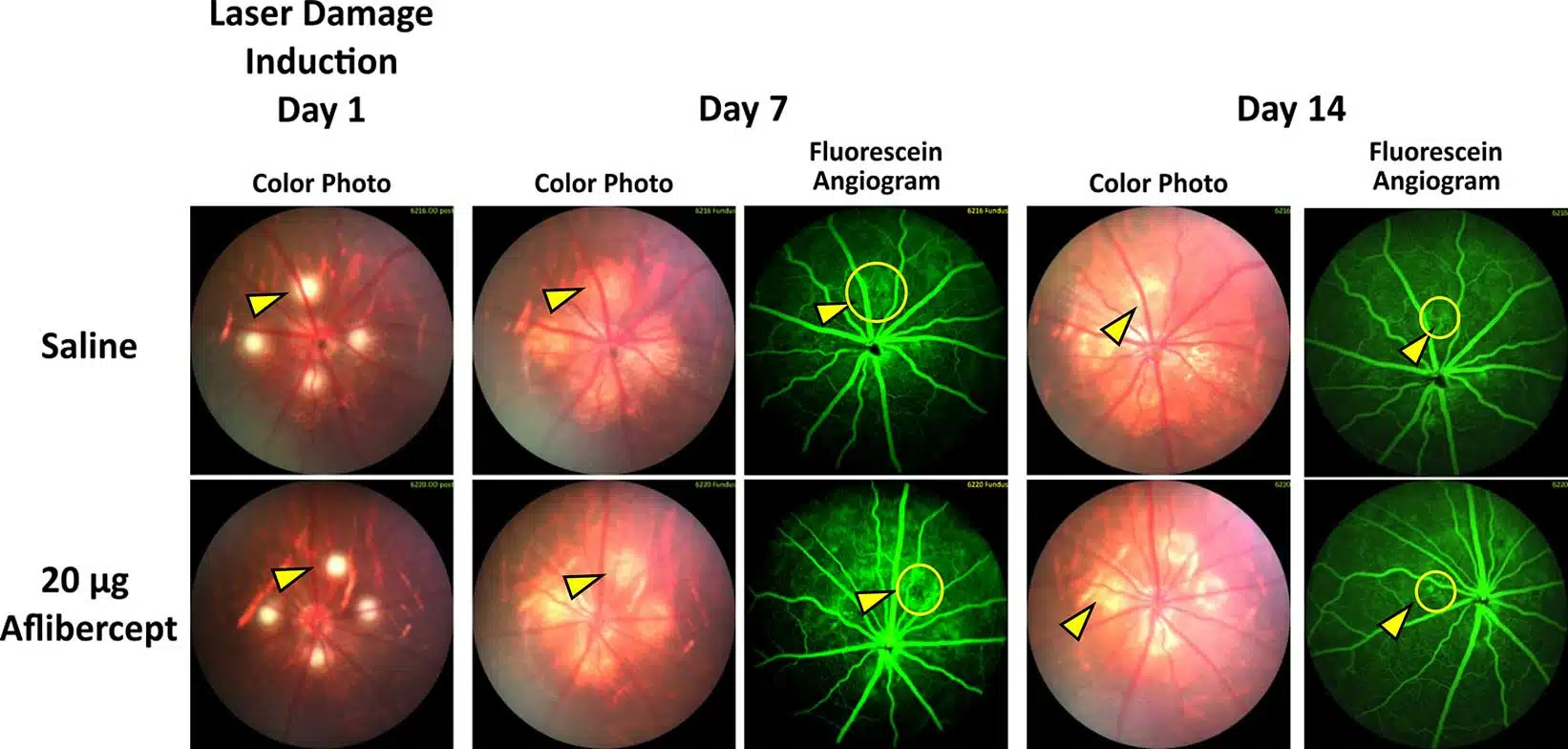
Advanced techniques using the Phoenix MICRON® IV Laser guided system provides accurate and repeated laser photocoagulation pulses to Bruch's membrane. This system is a 532nm diode laser and can be interchangeable between mice and rats. Both laser CNV model options are currently available and readily used. CNV is evident within 7 days after laser induction and disease progression is monitored by FA and OCT.
Applications of Laser Induced Choroidal Neovascularization Models
- Study of wet AMD (age-related macular degeneration)
- Testing the Efficacy of Therapeutics
- Drug Screening and Development
- Mechanism of Action Studies
- Evaluation of Gene Therapies
- Assessment of Imaging Techniques
- Evaluation of Combination Therapies
CNV Model Endpoints
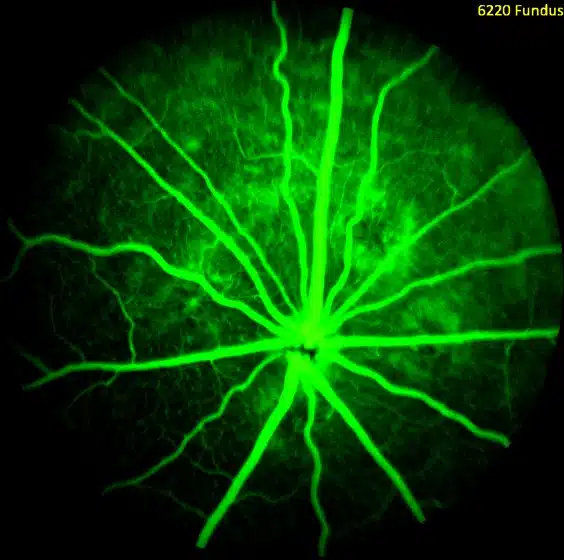
Fluorescein angiography
Together with our fluorescent fundus camera filters we capture FA with fluorescein sodium intravenous injections.
In order to assess the area of leakage in laser CNV models, we use fluorescein angiography to measure both area and intensity.
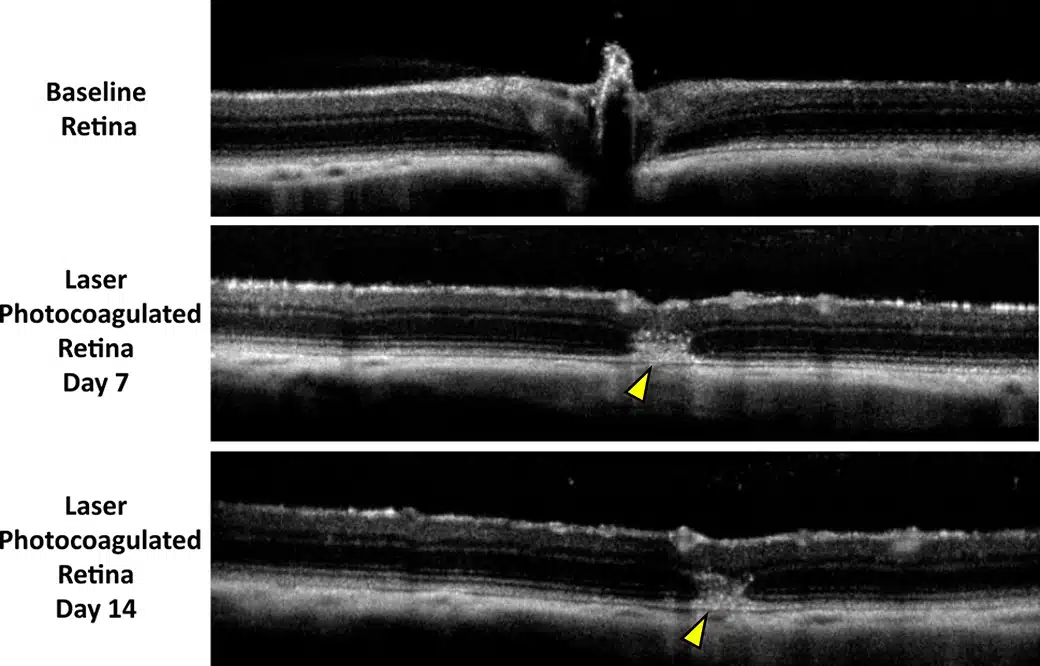
Optical coherence tomography
Using the SD-OCT we capture retinal cross section scans for real time lesion volume measurements, which are readily observed in our laser CNV models.
About rodent laser CNV models
Lesion area quantification by fluorescein angiography
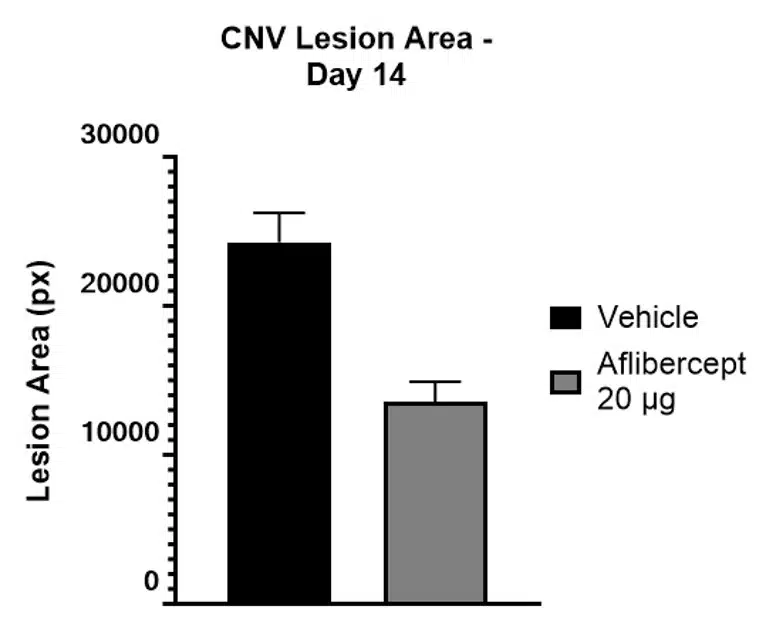
Lesion area by fluorescein angiography
We utilize automated image processing to quantify lesion area and intensity from fundus autofluorescence images. In rodent laser CNV models lesions are readily observed by day 14 and can be attenuated with positive controls like aflibercept.
Lesion volume quantification by OCT
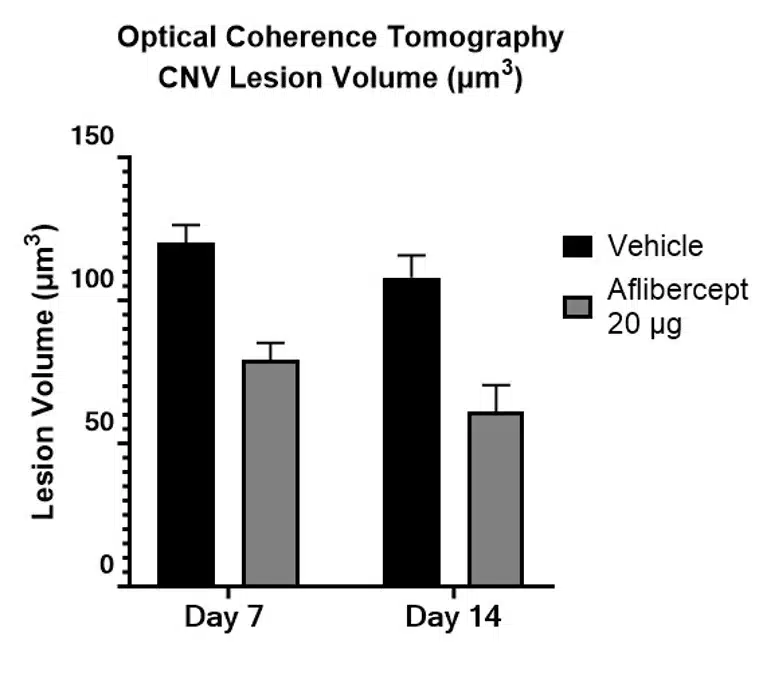
Lesion volume by OCT
In our laser CNV models, the laser photocoagulated retina can be clearly visualized with OCT by day 7 but can be attenuated using aflibercept. Lesion volume quantification is a robust primary endpoint of these models.
Frequently Asked Questions
Answers to the most common questions about laser CNV models for wet AMD research.
Choroidal neovascularization (CNV) is when new blood vessels grow in a layer of the eye known as the choroid. CNV is a common cause of neovascular or "wet" age-related macular degeneration. Laser CNV models are used to study disease and test the efficacy of new therapies.
CNV classification is based on anatomical findings by OCT. When CNV occurs under the RPE, it is classified as type 1. When CNV occurs in the subretinal space, it is classified as type 2. When intraretinal neovascularization occurs, it is classified as type 3.
Our most common model uses Brown Norway rats. However, laser CNV can be performed in most strains of rat and mice.